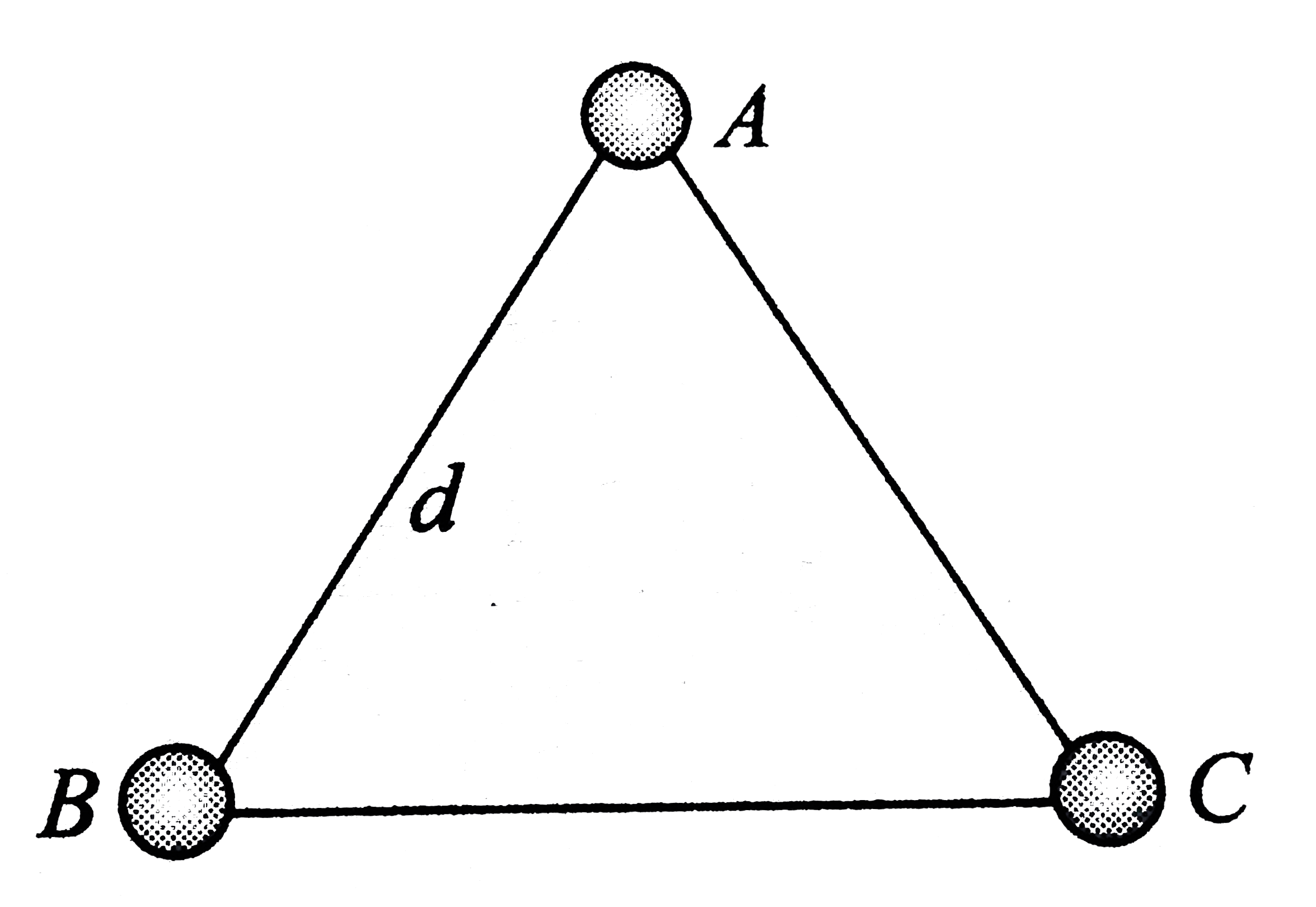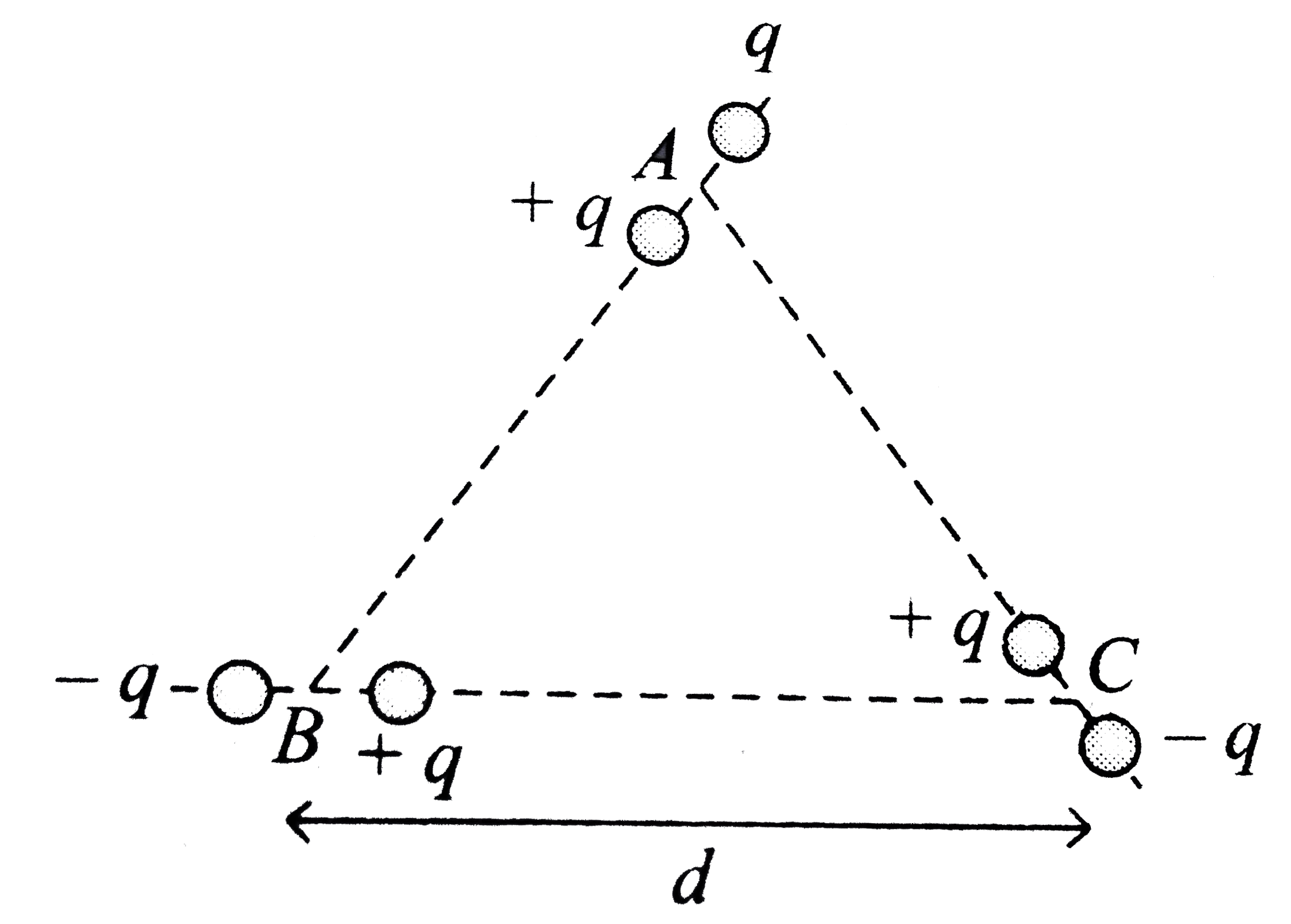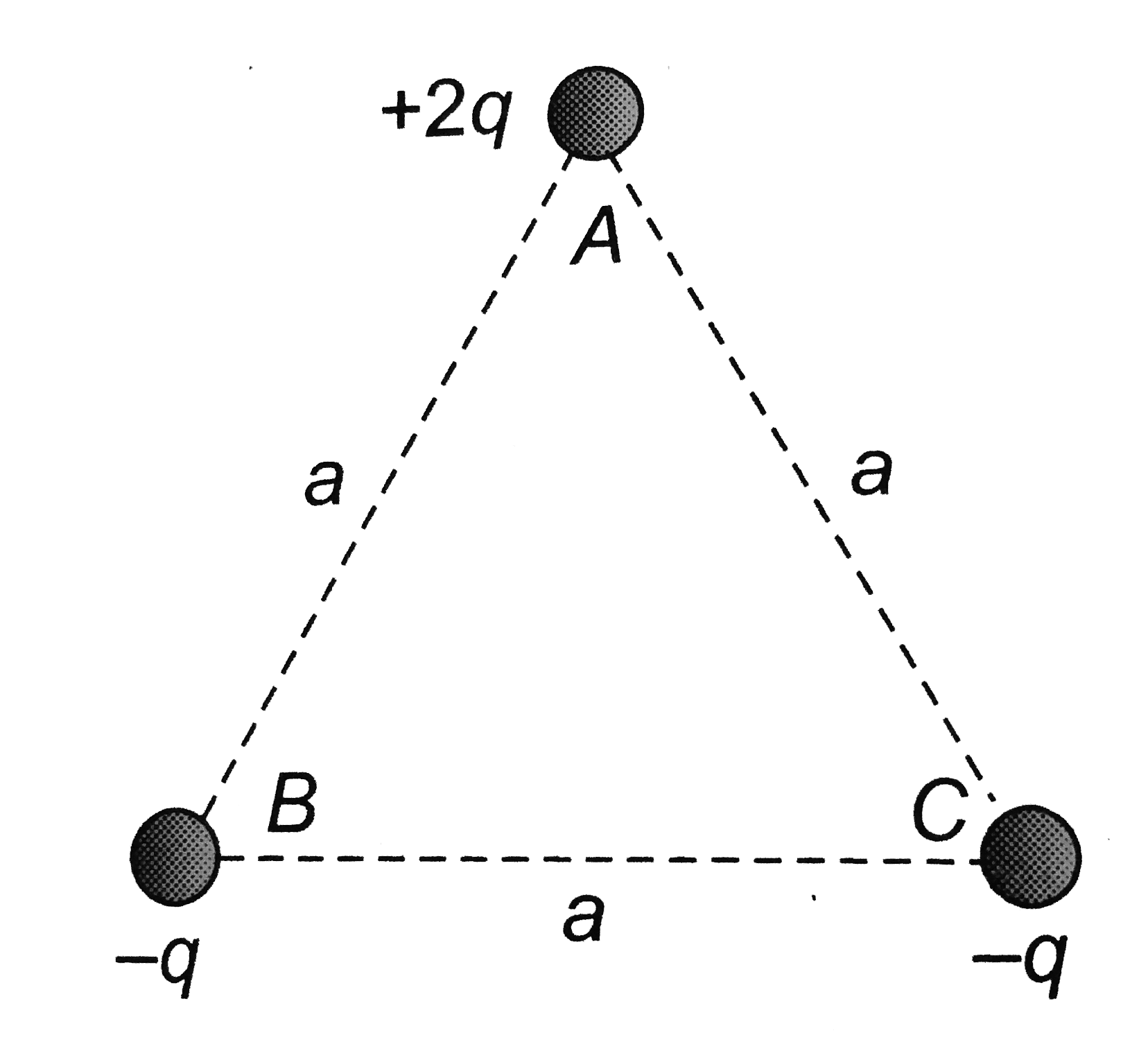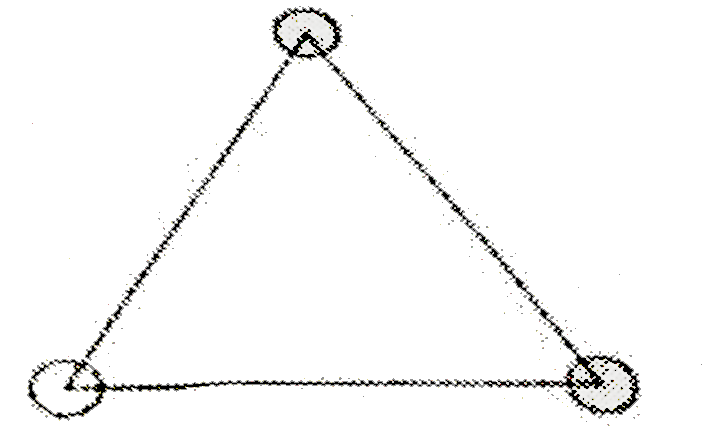Three identical metallic uncharged sphere A, B and C each of radius, a are kept at the corners of an equilateral triangle of side d(d>>a) as shown in fig. The fourth sphere (of radius a), which has a charge q, touches A and is then removed to a position far away. B is earthed and then the earth connection is removed. C is then earthed. The charge on C

qa2d(2d−a2d)
qa2d(2d−ad)
−qa2d(d−ad)
2qad(d−a2d)
The correct Answer is:C
kq1a+kq2d=0 or q1=−qa2d
kq2a+kq2d+kq1d=0
or q2=−qa2d(d−ad)

Topper's Solved these Questions
- ELECTROSTATIC POTENTIAL AND CAPACITANCEBOOK - DISHA PUBLICATIONCHAPTER - ELECTROSTATIC POTENTIAL AND CAPACITANCEEXERCISE - EXERCISE -1: CONCEPT BUILDER
58 Videos
- ELECTROMAGNETIC WAVESBOOK - DISHA PUBLICATIONCHAPTER - ELECTROMAGNETIC WAVESEXERCISE - Exercise - 2 : Concept Applicator
30 Videos
- GRAVITATIONBOOK - DISHA PUBLICATIONCHAPTER - GRAVITATIONEXERCISE - EXERCISE-2
30 Videos
Similar Questions
Three identical metallic uncheged spheres A,B,andC, each of radius a, are kept at the corners of an equilateral triangle of side d(d>>a) as shown in (Fig. 3.137). The fourth sphere (of radius a), which has a charge q, touches A and is then removed a position far away. B is earthed and then the earth connection is removed. C is then earthed. The charge on C is
 .
.
View SolutionThree identical metallic uncharged spheres A, B and C of radius a are kept on the corners of an equilateral triangle of side d(d>>a). A fourth sphere (radius a) which has charge Q touches A and is then removed to a position for away. B is earthed and then the earth connection is removed. c is then earthed. The charge on C is
View Solution
Knowledge Check
Three identical metallic uncharged spheres A,B,andC, each of radius a, are kept at the corners of an equilateral triangle of side d(d>>a) as shown in (Fig. 3.137). The fourth sphere (of radius a), which has a charge q, touches A and is then removed a position far away. B is earthed and then the earth connection is removed. C is then earthed. The charge on C is
 .Aqa2d(2d−a2d)Bqa2d(2d−ad)C−qa2d(d−ad)D−2qad(d−a2d)
.Aqa2d(2d−a2d)Bqa2d(2d−ad)C−qa2d(d−ad)D−2qad(d−a2d)Three identical metallic uncharged spheres A, B and C of radius a are kept on the corners of an equilateral triangle of side d(d>>a). A fourth sphere (radius a) which has charge Q touches A and is then removed to a position for away. B is earthed and then the earth connection is removed. c is then earthed. The charge on C is
AQa2d(2d−a2d)BQa2d(2d−ad)CQa2d(a−dd)D2Qad(d−a2d)There are three unchanged identical metallic spheres 1,2and3 each of radius r and are placed at the verticles of an equlilateral triangle of side d.A charged metallic sphere having equal q of same radius r is touched to sphere 1 after some time it is taken to the location of sphere 2 and is touched to it ,then it is taken far away form sphere 1,2,3 after that the sphere 3 is grounded the charge on sphere 3 is (neglect electrostatic induction by assuming d>>2r)
AzeroB−3qr4dC−qr2dD−qr2d
Three identical dipoles with charges q and −q, and separation A between the charges, are placed at the corners of an equilateral triangle of side D as shown in (Fig. 3.123). Find the interaction energy of the system (a<<d).
 .
.
View SolutionThree identical dipoles with charges q and −q, and separation A between the charges, are placed at the corners of an equilateral triangle of side D as shown in fig. Find the interaction energy of the system (a<<d).
 .
.
View SolutionThree charges of (+2q),(−q) and (−q) are placed at the corners A,B and C of an equilateral triangle of side a as shown in the adjoining figure. Then the dipole moment of this combination is

View SolutionThree small conducting spheres each of radius a and charge q is placed at the corners of an equilateral triangle of side lenth /. The side lenth / is considerably larger than dimensions of the spheres. Find the electrical potential energy of system.

View SolutionThree charges of (+2q),(−q) and (−q) are placed at the corners A,B and C of an equilateral triangle of side a as shown in the adjoining figure. Then the dipole moment of this combination is

View Solution
